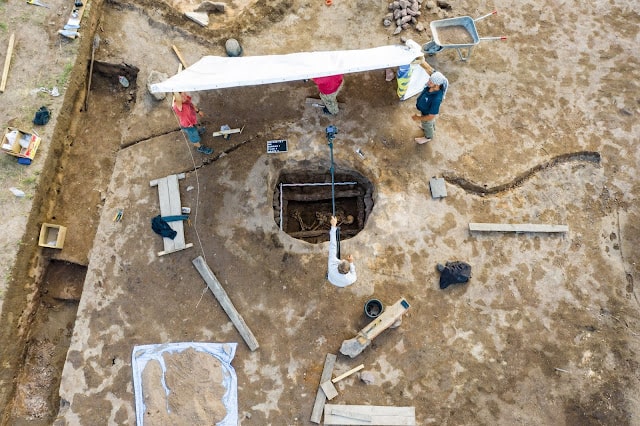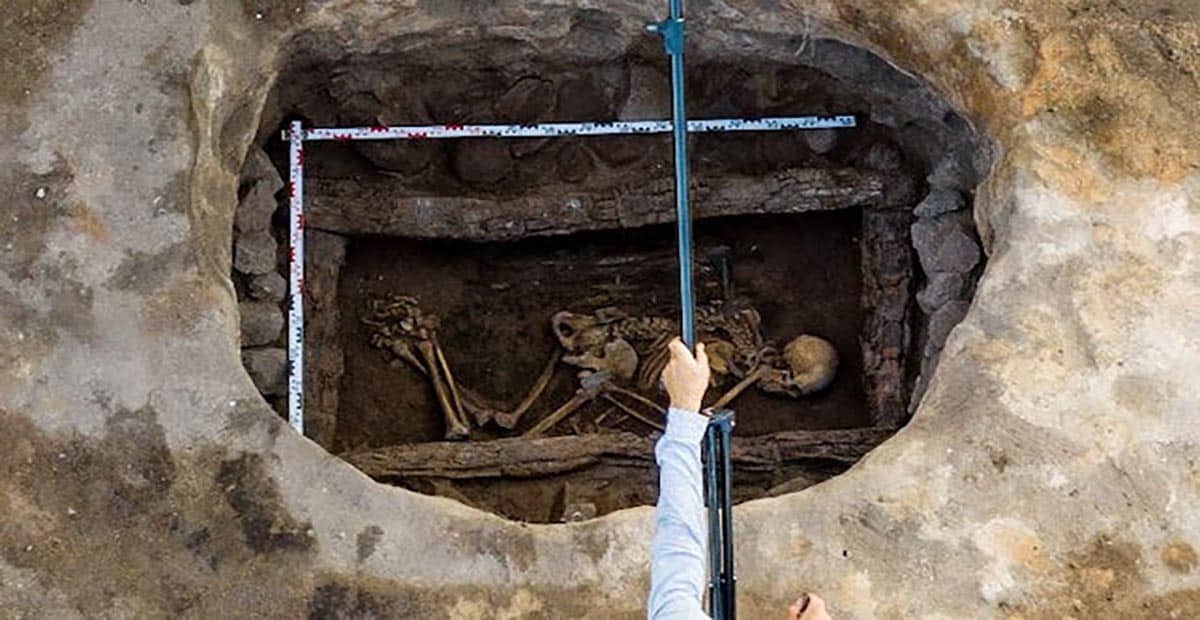2,500-Year-Old Scythian Warrior Grave Found In Siberian Valley Of The Kings
The 2,500-year-old tomb of a Scythian warrior has been found in the ‘Siberian Valley of the Kings’ in Russia.
Buried with his weapon and golden ornaments, the warrior discovered by archaeologists from Jagiellonian University in Krakow was found in an untouched grave in an area known for both its rich burial sites and notorious grave-robbing.
The so-called ‘Siberian Valley of the Kings’, named after its Egyptian counterpart, is located in the Asian part of the Russian Federation.
It earned its name due to the numerous giant kurgan tombs, often full of treasures thought to belong to royalty.

The archaeological site of Chinge-Tey where Poles uncovered the new treasures is operated together with the State Hermitage Museum in Sankt Petersburg and Korean Seoul University, reports the Science in Poland website (Nauka w Polsce).
Dr. Lukasz Oleszczak, the Polish expedition’s head, told PAP: “For our research, we chose an inconspicuous, almost invisible kurgan with a diameter of about 25 m.
“We hoped that it remained unnoticed by the robbers.”
Of the two tombs they found only one was robbed, while the other was untouched.

He added: “Inside was a young warrior’s skeleton with full equipment. Their area around his head was decorated with a pectoral made of gold sheet, a glass bead, a gold spiral for adorning the braid.”
Archaeologists also found the Scythian buried with a sharpening stone and his weapon – a bronze battle-axe with a stylized eagle’s head, arrows, an iron knife, and fragments of a bow – presenting an array of items a warrior roaming the Siberian wilderness would need.
Dr. Oleszczak said: “Other well-preserved items were made of organic materials. Among them there is a leather quiver, arrow spars, the axe’s shaft and a belt.”
The findings date back to the 7th or 6th century BC. Scythians were nomad people from Central Asia, who expanded into Eastern Europe through their love of combat and war.
Their achievements were described by the Greek historian Herodotus.

The Scythians buried their dead in kurgans, some resembling hills visible from afar.
The grave found this year was surrounded by a shallow trench. Inside archaeologists uncovered several dozen fragments of ceramic vessels and animal bones, mainly of cows, horses, goats or sheep.
Most probably they are traces of religious ceremonies and rituals, such as funeral wakes.
The Polish archaeologists will continue their work in Chinge-Tey, as there is still one grave they found, but were unable to fully examine.




